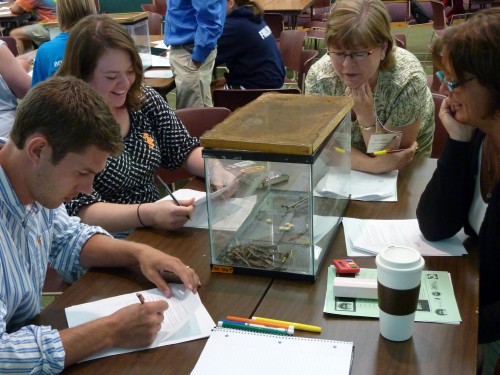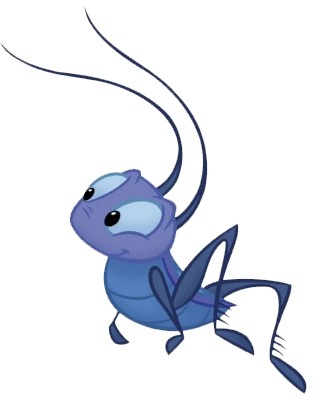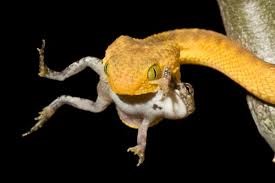 Inquiry based activities are one of the best ways to teach science to students. Students build a comprehension of the scientific method through exposure to the process of conducting research. Having students take an active role in collecting data and gathering evidence keeps them engaged while reinforcing the critical notion that claims be supported by evidence. This lesson plan provides teachers with a fun but relatively simple template for creating student research projects using antipredator behavior in crickets. Students will examine hiding behavior in crickets and determine how/whether certain variables of interest (e.g. sex, food availability, light level, etc.) influence hiding.
Inquiry based activities are one of the best ways to teach science to students. Students build a comprehension of the scientific method through exposure to the process of conducting research. Having students take an active role in collecting data and gathering evidence keeps them engaged while reinforcing the critical notion that claims be supported by evidence. This lesson plan provides teachers with a fun but relatively simple template for creating student research projects using antipredator behavior in crickets. Students will examine hiding behavior in crickets and determine how/whether certain variables of interest (e.g. sex, food availability, light level, etc.) influence hiding.
At the conclusion of the lesson, students will be able to:
- Understand the components of the scientific method
- Design experiments to test specific hypotheses
- Interpret data
- Use evidence to support claims
- Understand how predators can influence prey behavior
- Understand how organisms often face trade-offs between safety and feeding, or safety and finding mates
Resources:
- Lesson plan
- Link to cricket supplier (or check your local pet store!)
Lesson Plan created by Michael Kuczynski, 2015


